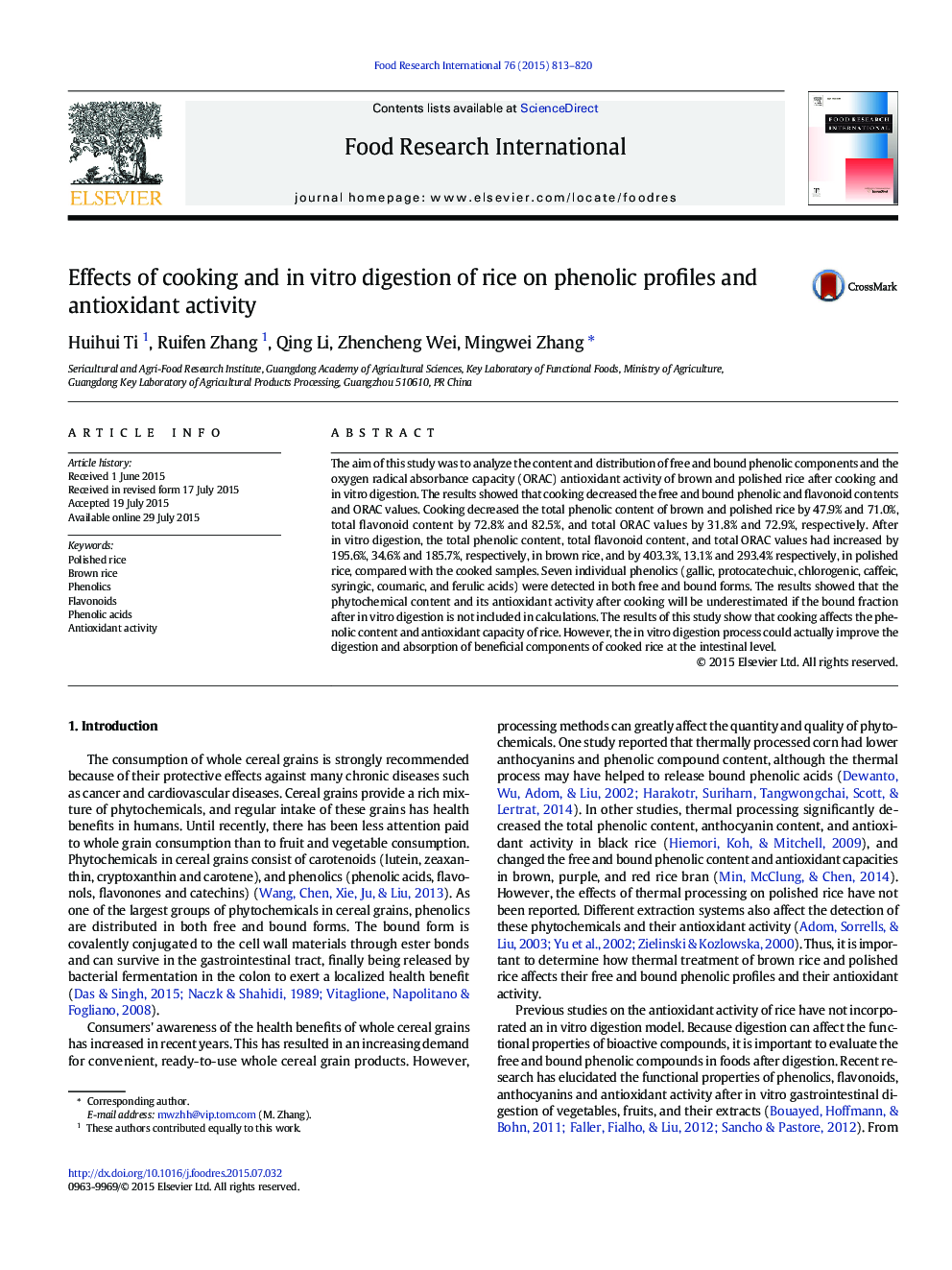| Article ID | Journal | Published Year | Pages | File Type |
|---|---|---|---|---|
| 6395265 | Food Research International | 2015 | 8 Pages |
â¢Differences exist in the free and bound phytochemicals in brown and polished rice.â¢Cooking causes significant phytochemical losses in polished/brown rice.â¢The ranges of free & bound phytochemical contents vary after cooking or digestion.â¢In vitro digestion increases the release of phytochemicals in polished/brown rice.â¢Phytochemicals in cooked polished/brown rice are underestimated without digestion.
The aim of this study was to analyze the content and distribution of free and bound phenolic components and the oxygen radical absorbance capacity (ORAC) antioxidant activity of brown and polished rice after cooking and in vitro digestion. The results showed that cooking decreased the free and bound phenolic and flavonoid contents and ORAC values. Cooking decreased the total phenolic content of brown and polished rice by 47.9% and 71.0%, total flavonoid content by 72.8% and 82.5%, and total ORAC values by 31.8% and 72.9%, respectively. After in vitro digestion, the total phenolic content, total flavonoid content, and total ORAC values had increased by 195.6%, 34.6% and 185.7%, respectively, in brown rice, and by 403.3%, 13.1% and 293.4% respectively, in polished rice, compared with the cooked samples. Seven individual phenolics (gallic, protocatechuic, chlorogenic, caffeic, syringic, coumaric, and ferulic acids) were detected in both free and bound forms. The results showed that the phytochemical content and its antioxidant activity after cooking will be underestimated if the bound fraction after in vitro digestion is not included in calculations. The results of this study show that cooking affects the phenolic content and antioxidant capacity of rice. However, the in vitro digestion process could actually improve the digestion and absorption of beneficial components of cooked rice at the intestinal level.
